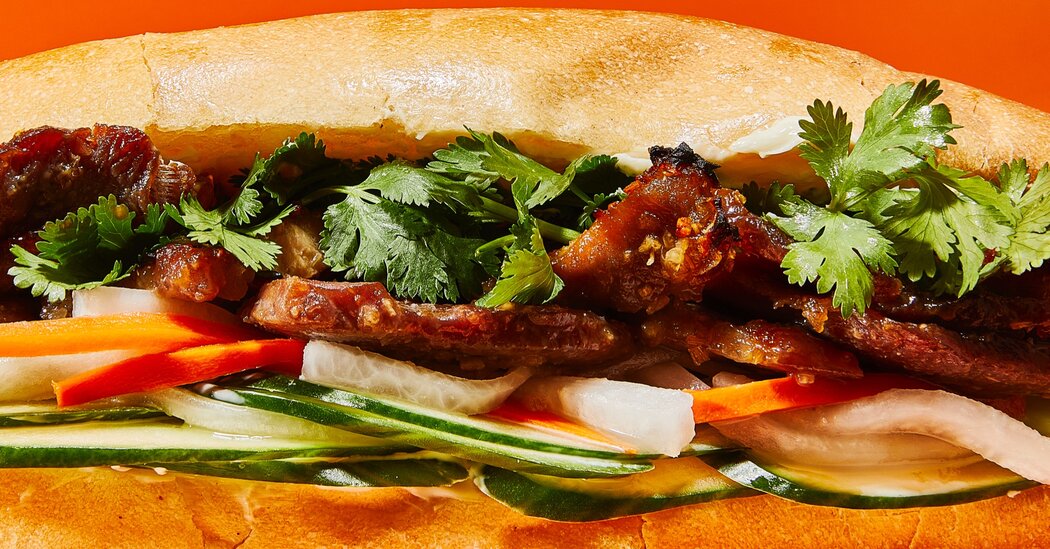
While canonically Vietnamese, the dish’s origins are global: bánh mì were referenced in Vietnam as early as the early 1800s, but it wasn’t until baguettes were introduced to the country — by French colonists in the 19th century — that the sandwich came into its own. The disruption of wheat imports during World War I led Vietnamese chefs to experiment with rice flour, and bread became more accessible to the local populace. In the 1950s, bánh mì skewed further from French tastes and closer to the distinctly Vietnamese iterations that are ubiquitous today. Since the 1970s, when the Vietnamese diaspora became a global presence, bánh mì have proliferated as well. Wherever there are Vietnamese communities, you’ll also find bánh mì.
It has been a minute, but my own first bites came in a tiny Third Ward coffee shop in Houston, made by a mother-son-and-aunt team working a single toaster oven. The shop’s now defunct, but forever mourned, and my craving hasn’t abated. In fact, it’s one of the handful of dishes that I consistently seek out in any new city.
Once, in Amsterdam, wanting a sandwich that wasn’t a toastie, I stumbled into a tiny Vietnamese diner, on a chilly corner alongside a canal, where the chef took care to slather my spread with pâté past the point of reason and well into decadence. In Seattle, earlier this year, my boyfriend and I sat in ChuMinh Tofu and Vegan Deli, which serves local food free to the community on Sundays. Their bánh mì crunched like a symphony, accompanied by what was likely the best chile crisp I’ve ever had. And at Bánh Mì Bá Ba in Tokyo a few weeks back, eating a sandwich on one of the stools lining the road felt a lot like a seat on a dear friend’s patio.
But whenever I’m in Houston, one of the most accessible joys for me is the blissful presence of many bánh mì: It’s difficult to drive too many blocks around Harris and Fort Bend Counties without running into a menu slinging these sandwiches. Each spot serves its respective clientele, but they’re unified, pretty naturally, in their roles as third places for the community. You can sit for a minute. Stretch. Bite down on a delicious sandwich. Mill around for a while. Swig a few sips of coffee. Make your way toward the rest of your day.
For this recipe, pork is the star. Following a brief marinade, the meat is broiled, then stuffed in a warm baguette alongside pickles, mayo, butter and a sprinkling of herbs. Ideally, you’ll pick up the baguettes and butter from a Vietnamese bakery or bánh mì shop. And it never hurts to pick up some pâté while you’re there. But it’s always worth going extra on the pork shoulder; leftovers hold the promise of future bánh mì.



